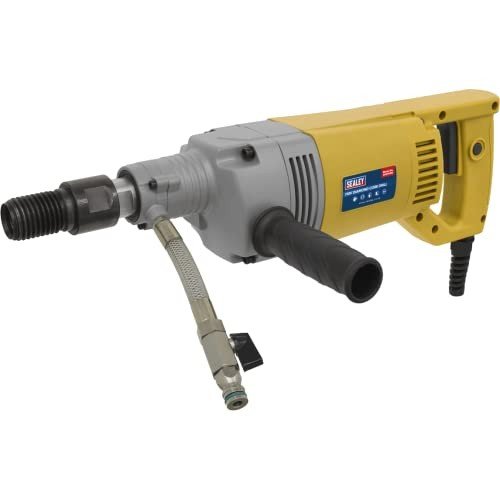
Mitresaw
Add a review FollowOverview
-
Founded Date October 22, 2016
-
Sectors Travel/ Travel/ Tourism
-
Posted Jobs 0
-
Viewed 3
Company Description
9 . What Your Parents Teach You About Mitersaw
The Essential Guide to Miter Saws: Understanding, Choosing, and Using the Perfect Tool
Introduction
Miter saws are indispensable tools in the arsenal of both amateur and Professional Mitre Saw woodworkers. These flexible devices enable users to make accurate crosscuts and angled cuts, making them perfect for a range of woodworking tasks, from framing to cabinetry. In this extensive article, we will look into the world of miter saws, covering their types, features, and crucial considerations when choosing one. We’ll also answer some often asked concerns, guaranteeing that readers are fully equipped to make educated choices.
What is a Miter Saw?
A miter Mitre Saw Deals is a power tool that features a circular blade and is utilized for making accurate crosscuts and miters at various angles. The saw is typically installed on a hinged arm that permits the user to decrease the blade down onto the workpiece, making it procedure effective and accurate.
Key Components of a Miter Saw
| Part | Description |
|---|---|
| Blade | Circular cutting blade, readily available in numerous sizes. |
| Base | The flat surface area that supports the workpiece. |
| Miter Gauge | Adjustable mechanism to set the angle of cuts. |
| Bevel Adjustment | Enables angled cuts along the vertical plane. |
| Fence | The assisting edge that keeps wood stable during cutting. |
Kinds Of Miter Saws
There are numerous types of miter saws, each designed for particular cutting requirements. Below is a contrast of the most typical types:
| Miter Saw Type | Description | Best For |
|---|---|---|
| Requirement Miter Saw | Basic model, ideal for making quick crosscuts and miter cuts. | Small jobs and light-duty tasks. |
| Compound Miter Saw | Can tilt in one direction for diagonal cuts, perfect for complex jobs. | Crown molding, wooden frames, etc. |
| Sliding Mitre Saw Compound Miter Saw | Offers sliding abilities; enables broader cuts. | Bigger pieces, thicker products. |
| Dual-Bevel Miter Saw | Can tilt in both instructions, making it flexible. | Professionals who work with complex angles. |
Selecting the Right Miter Saw
When it concerns choosing the right miter saw, a number of elements enter into play:
- Cutting Capacity: Consider the size of products you plan to work with. Sliding miter saws generally provide larger cutting capacity.
- Angle Adjustment: Look for features like Double Mitre Saw bevels and accurate angle settings if your work needs elaborate cutting.
- Mobility: If you require to move your saw regularly, consider the weight and style of the design.
- Power: Thicker products require more power; a greater amperage motor is more effective for such jobs.
Features to Consider
When assessing miter saws, the following functions can significantly improve your cutting experience:
| Feature | Description |
|---|---|
| Laser Guide | Tasks a line on the workpiece for increased precision. |
| Electric Brake | Stops the blade rapidly for boosted safety. |
| Dust Collection | Keeps your work space clean and enhances exposure. |
| User-Friendly Controls | Intuitive settings that streamline adjustments. |
Safety Tips for Using a Miter Saw
Safety needs to constantly be a top priority when operating any power tool. Here are some essential safety suggestions:
- Wear Safety Gear: Mitersaw Always utilize safety glasses and ear security.
- Check Your Workpiece: Ensure there are no foreign items in the cutting course.
- Protect Your Work: Use clamps or a vice to hold the workpiece consistent.
- Do Not Overreach: Keep a stable position by positioning yourself correctly.
Upkeep Tips for Miter Saws
To ensure that a miter saw runs smoothly and lasts long, routine maintenance is vital. Here are some tips:
- Keep the Blade Sharp: Dull blades can develop friction and damage the material.
- Tidy the Saw Regularly: Remove dust build-up and particles, specifically from the blade and motor.
- Check the Alignment: Periodically confirm that the blade is lined up precisely to make sure precision.
- Lube Moving Parts: Apply maker oil on the moving parts to minimize friction.
FAQ Section
1. Can a miter saw cut through thick wood?
Yes, however guarantee you pick a saw with the appropriate cutting capability and a sharp blade.
2. What size miter saw do I require?
The size depends on your projects. A 10-inch saw is ideal for many hobbyists, while a 12-inch saw can manage broader boards and thick products.
3. Is it safe to use a miter saw alone?
It is usually safe to use a miter saw alone, but ensure you follow all safety standards and maintain a clear workspace.
4. How can I extend the life of my miter saw?
Routine upkeep, like cleansing and honing the blade, together with correct storage, will help extend its life expectancy.

5. What’s the distinction in between a compound miter saw and a sliding compound miter saw?
A compound miter saw can make beveled cuts in one instructions, while a sliding compound miter saw has a sliding feature to permit for wider cuts.
Miter saws are important tools that can elevate the quality and effectiveness of woodworking projects. Understanding the various types, features, and precaution can help both novices and skilled specialists make informed choices. With regular upkeep and correct use, a miter saw can prove to be an important addition to any workshop, making sure tidy and accurate cuts each time. Whether you’re framing a home or crafting intricate moldings, the ideal miter Mitter Saw will assist you achieve your vision with ease and precision.

